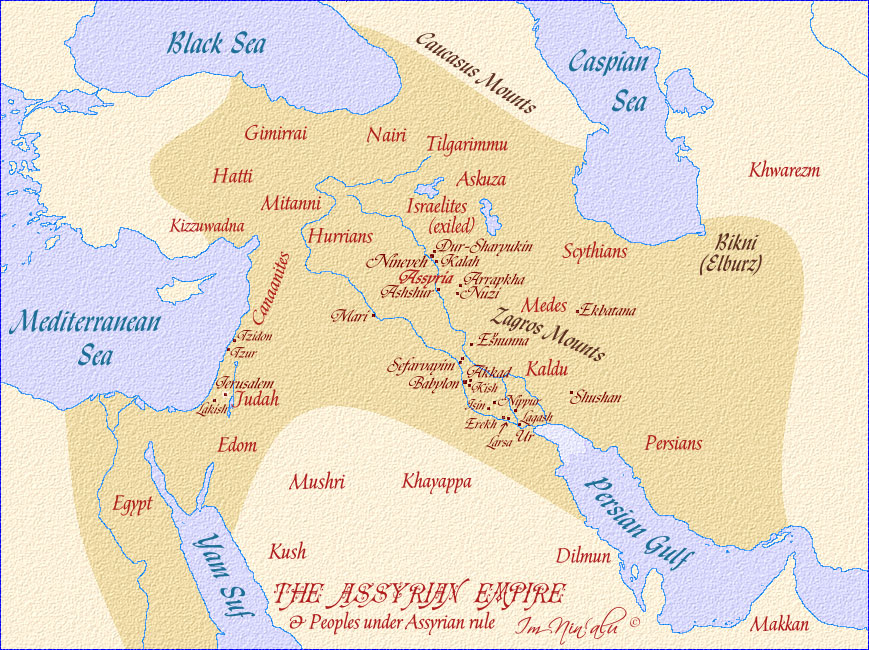
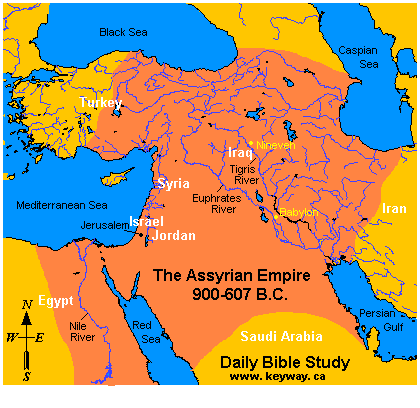
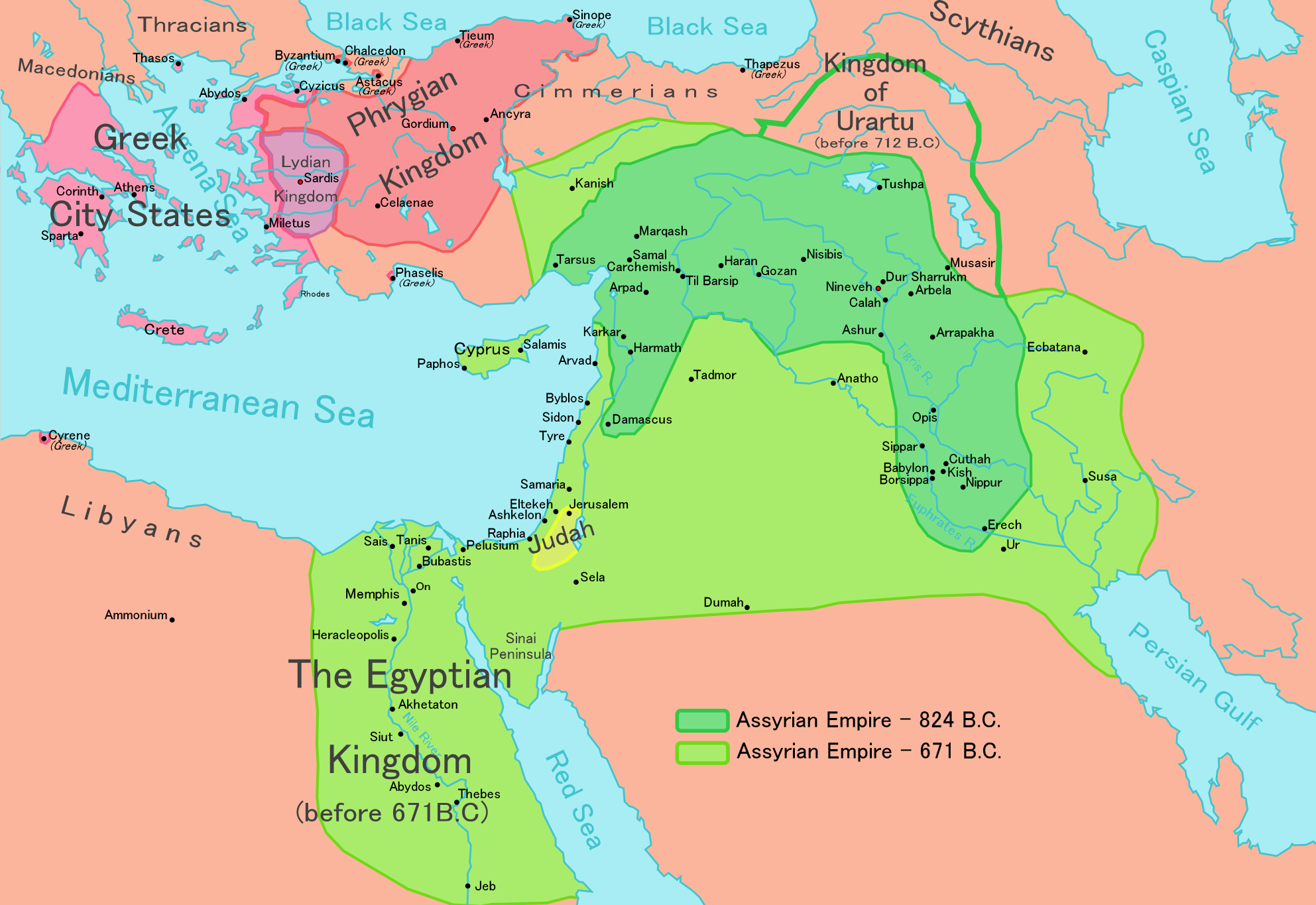
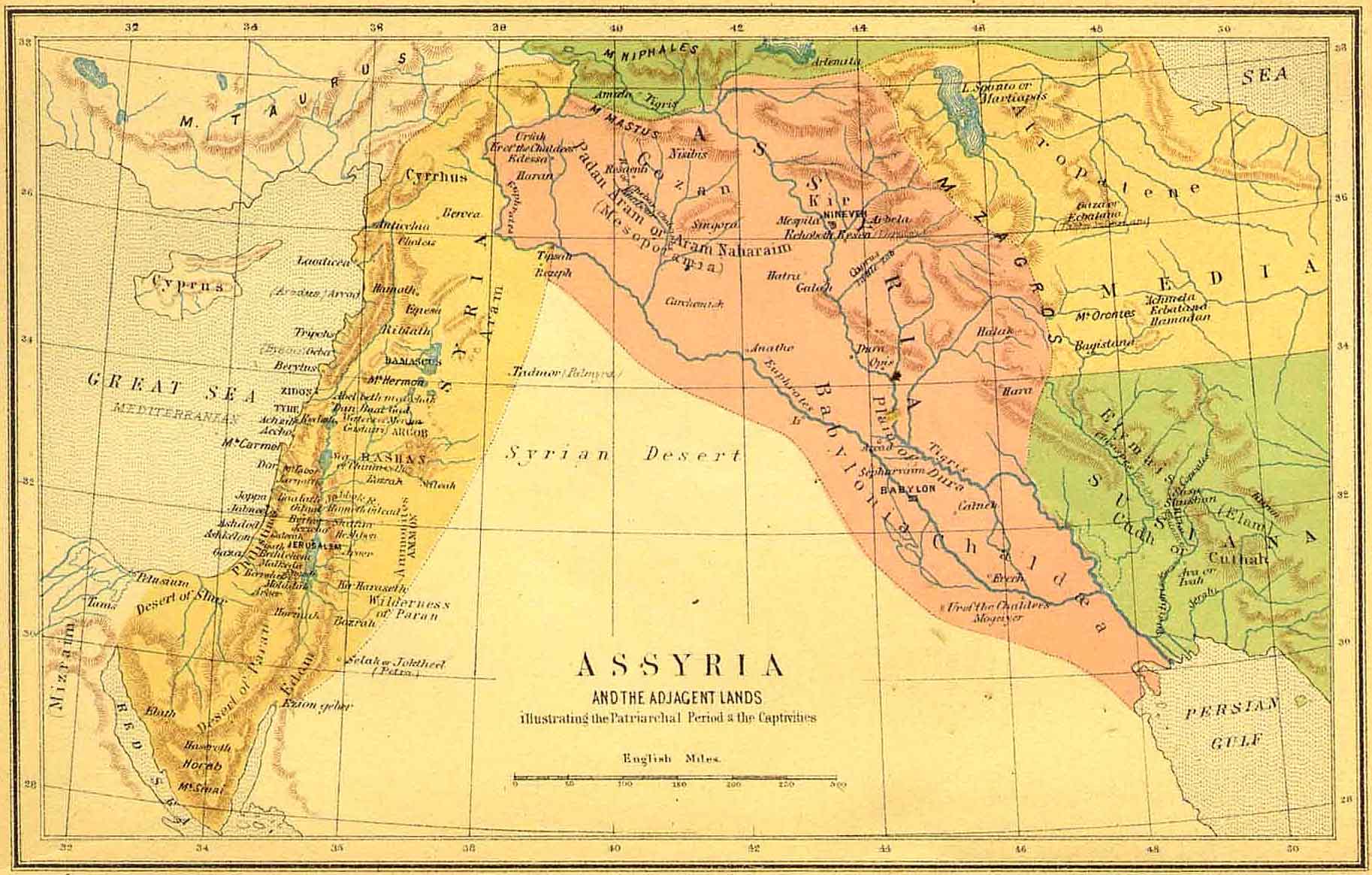

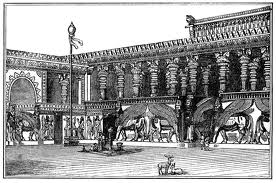
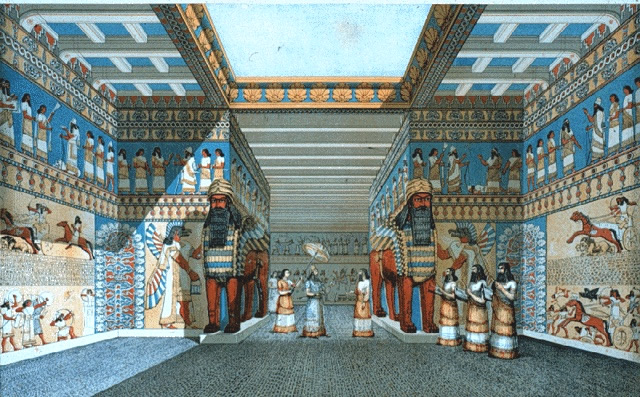

Text source: Wikipedia
Ashur - Assyria
Assyria, Athura (Aramaic for Assyria), or AЕЎЕЎur (Akkadian for Assyria) was a Semitic Akkadian kingdom, extant as a nation state from the late 25th or earlyвҖ“24th century BC to 605 BC.[1
Assyria was centered on the Upper Tigris river, in northern Mesopotamia (present day northern Iraq). The Assyrians came to rule powerful empires a number of times through history. It was named for its original capital, the ancient city of Assur/Ashur (Akkadian: As part of the greater Mesopotamian civilization, Assyria was at its height a highly advanced nation for its time in terms of architecture, engineering, agriculture, economics, civil service, mathematics, medicine, literature,military technology, law, astronomy and libraries/record keeping. A number of Assyrian kings showed an early interest in botany and zoology also.[1]
Assyria was also sometimes known as Subartu, and after its fall, from 605 BC through to the late 7th century AD variously as Athura, Syria (Greek), Assyria (Latin) and Assuristan. The term Assyria can also refer to the geographic region or heartland where Assyria, its empires and the Assyrian people were and still are centred. The modern Assyrian Christian minority in northern Iraq, north east Syria, south east Turkey and north west Iranare the descendants of the ancient Assyrians (see Assyrian continuity).[2][3]
Assyria originally was one of a number of Akkadian city states in Mesopotamia. In the late 24th century BC, Assyrian kings were regional leaders only, and subject to Sargon of Akkad who united all the Akkadian Semitesand Sumerian speaking peoples of Mesopotamia under the Akkadian Empire which lasted from c. 2334 BC to 2154 BC. Following the fall of the Akkadian Empire c. 2154 BC,[4] and the succeeding Sumerian Third Dynasty of Ur, there were a number of other competing Amorite states such as Isin and Larsa, but Mesopotamia eventually coalesced into two distinct nations: Assyria in the north, and Babylonia in the south.
In the Old Assyrian period of the Early Bronze Age, Assyria had been a kingdom of northern Mesopotamia, initially competing with their fellow Sumero-Akkadian states in southern Mesopotamia for dominance of the region, and also with the Hattians and Hurrians to the north in Asia Minor, the Gutians to the east in the Zagros Mountains and the Eblaites and later Amorites in the Levant to the west. During the 20th century BC, it established colonies in Asia Minor, and under king Ilushuma it asserted itself over southern Mesopotamia. From the late 19th century BC Assyria came into conflict with the newly created state of Babylonia which eventually eclipsed the older Sumero-Akkadian states in the south. Assyria experienced fluctuating fortunes in the Middle Assyrian period. Assyria had a period of empire under Shamshi-Adad Iand Ishme-Dagan in the 19th and 18th centuries BC. Following this it found itself under short periods of Babylonian and Mitanni-Hurrian domination in the 18th and 15th centuries BC respectively, and another period of great power with the rise of the Middle Assyrian Empire (from 1365 BC to 1075 BC) that included the riegns of great kings such as Ashur-uballit I, Arik-den-ili, Tukulti-Ninurta I and Tiglath-Pileser I. During this period Assyria overthrew the Mitanni and eclipsed both the Hittite Empire and Egyptian Empire in the Near East. Beginning with the campaigns of Adad-nirari II from 911 BC,[1] it again became a great power over the next three centuries, overthrowing the Twenty-fifth dynasty of Egypt and conquering Egypt,[1] Babylonia, Elam,Urartu/Armenia, Media, Persia, Mannea, Gutium, Phoenicia/Canaan, Aramea (Syria), Arabia, Israel, Judah, Edom, Moab, Samarra, Cilicia, Cyprus, Chaldea, Nabatea, Commagene, Dilmun and the Hurrians, Sutu and Neo-Hittites, driving the Ethiopians and Nubians from Egypt,[1] defeating the Cimmerians and Scythians and exacting tribute from Phrygia, Magan and Punt among others.[1] After its fall, (between 612 BC and 605 BC), Assyria remained a province and Geo-political entity under the Babylonian, Median, Achaemenid, Seleucid, Parthian, Roman and Sassanid empires until the Arab Islamic invasion and conquest of Mesopotamia in the mid-7th century, when it was finally dissolved.[5]
Early history
In prehistoric times the region was home to a Neanderthal culture such as has been found at the Shanidar Cave. The earliest Neolithic sites in Assyria were the Jarmo culture c. 7100 BC and Tell Hassuna, the centre of the Hassuna culture, c. 6000 BC. During the 3rd millennium BC, there developed a very intimate cultural symbiosis between the Sumerians and the Semitic Akkadians throughout Mesopotamia, which included widespread bilingualism.[6] The influence of Sumerian (which was alanguage isolate and thus not related to any other language) on Akkadian (and vice versa) is evident in all areas, from lexical borrowing on a massive scale, to syntactic, morphological, and phonological convergence.[6] This has prompted scholars to refer to Sumerian and Akkadian in the 3rd millennium BC as a sprachbund.[6]
Text source: Wikipedia
Ш§ШөЩ„ Ш§Щ„ЩҶШө Щ…ЩҶ Щ…ЩҲЩӮШ№ Ш§Щ„ЩҲЩғЩҠШЁЩҠШҜЩҠШ§
Ш§ШҙЩҲШұ
Ш§Щ„ШұШ§ШЁШ· ЩҒЩҠ Щ…ЩҲЩӮШ№ Ш§Щ„ЩҲЩҠЩғЩҠШЁЩҠШҜЩҠШ§
You are welocome to send your comments and proposals as well any useful photos, documents, links for website update using our following address:
Ш§Щ„ШөЩҒШӯШ© ШӘШұШӯШЁ ШЁШ§ЩҠШ© Щ…Щ„Ш§ШӯШёШ§ШӘ Ш§ЩҲ Щ…ЩӮШӘШұШӯШ§ШӘ ЩғЩ…Ш§ ШӘШӘШ·Щ„Ш№ Щ„Ш§ШіШӘЩ„Ш§Щ… Ш§ЩҠШ© ШөЩҲШұ Ш§ЩҲ ЩҲШ«Ш§ШҰЩӮ Ш§ЩҲ ШұЩҲШ§ШЁШ· Щ…ЩҒЩҠШҜШ© Щ„ШӘШӯШҜЩҠШ«ЩҮШ§ Ш№ШЁШұ Ш§Щ„Щ…ШұШ§ШіЩ„Ш© Ш№Щ„Щү Ш§Щ„Ш№ЩҶЩҲШ§ЩҶ Ш§Щ„Ш§Щ„ЩғШӘШұЩҲЩҶЩҠ Ш§Щ„ШӘШ§Щ„ЩҠ
info@uruk-warka.dk
Other updates ... ШӘШӯШҜЩҠШ«Ш§ШӘ Ш§Ш®ШұЩү
Objects from German-Kurdish Excavation exhibited in the Erbil Museum .... ШӘЩҶЩӮЩҠШЁШ§ШӘ Ш§Щ„ШЁШ№Ш«Ш© Ш§Щ„Ш§Щ„Щ…Ш§ЩҶЩҠШ© Ш§Щ„ЩғШұШҜЩҠШ© - Щ…ШӘШӯЩҒ Ш§ШұШЁЩҠЩ„
Objects from German-Kurdish Excavation exhibited in the Erbil Museum .... ШӘЩҶЩӮЩҠШЁШ§ШӘ Ш§Щ„ШЁШ№Ш«Ш© Ш§Щ„Ш§Щ„Щ…Ш§ЩҶЩҠШ© Ш§Щ„ЩғШұШҜЩҠШ© - Щ…ШӘШӯЩҒ Ш§ШұШЁЩҠЩ„
Ashur Civilization - Land between Rivers - ШӯШ¶Ш§ШұШ© ШўШҙЩҲШұ -Ш§Щ„Ш№ШұШ§ЩӮ - Щ…Ш§ ШЁЩҠЩҶ Ш§Щ„ЩҶЩҮШұЩҠЩҶ